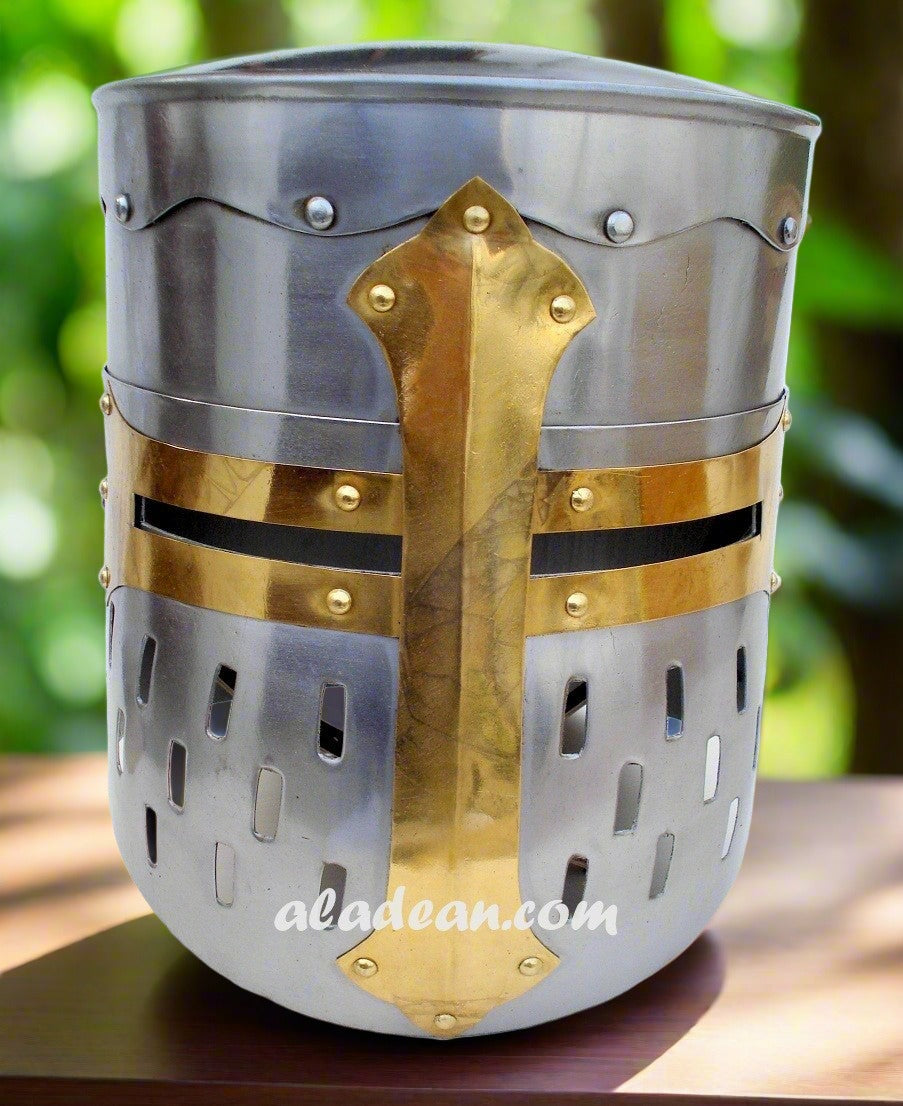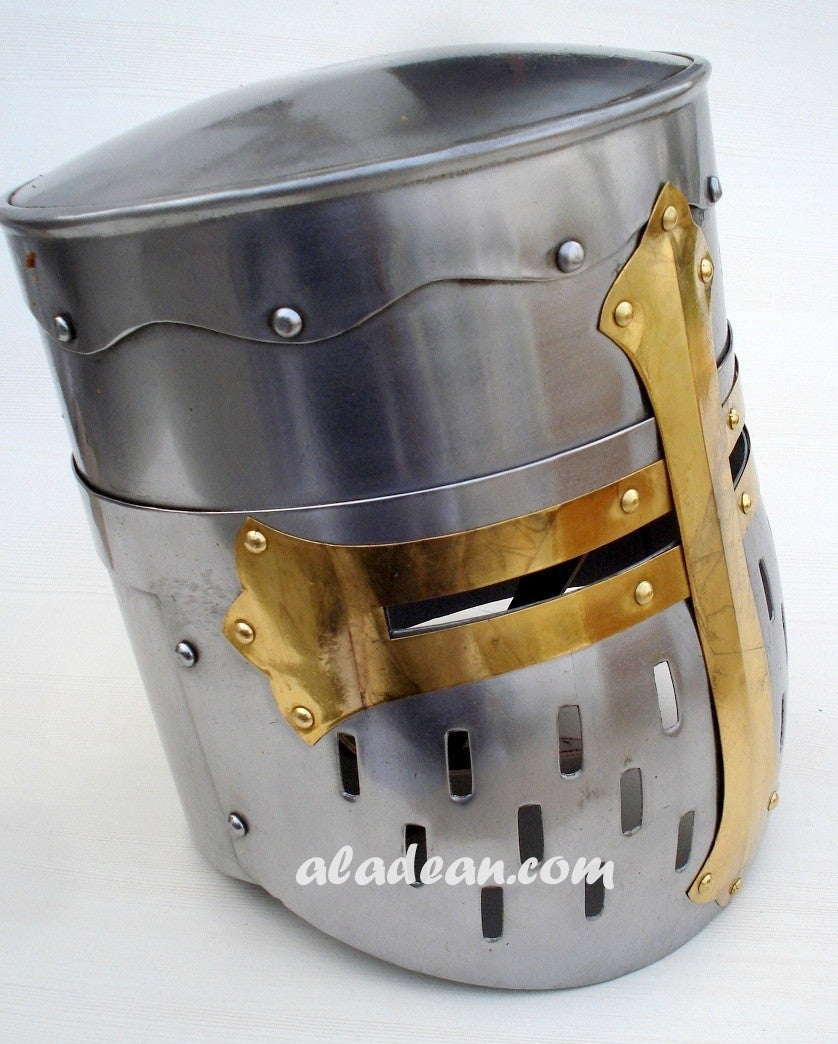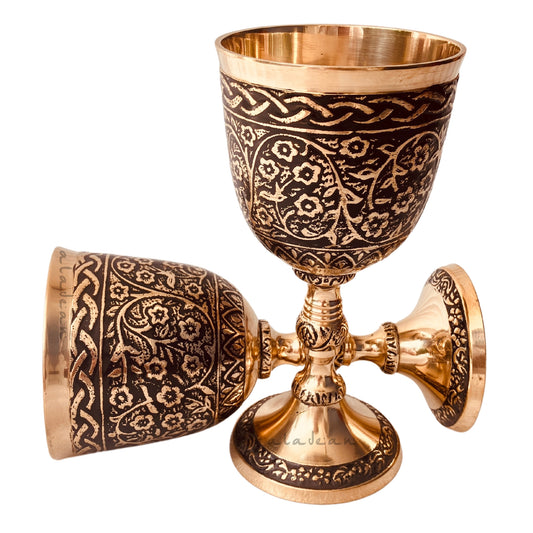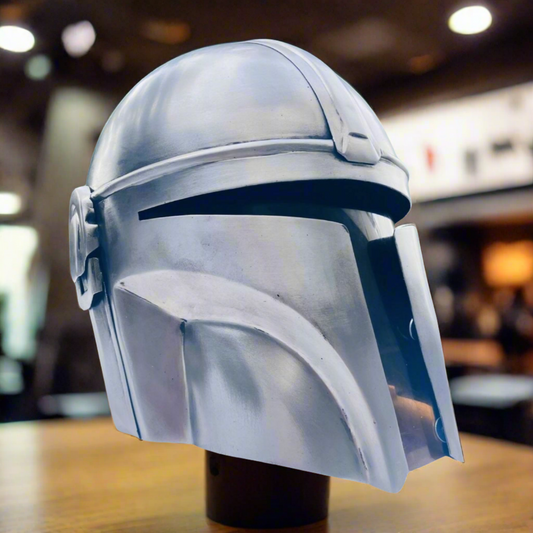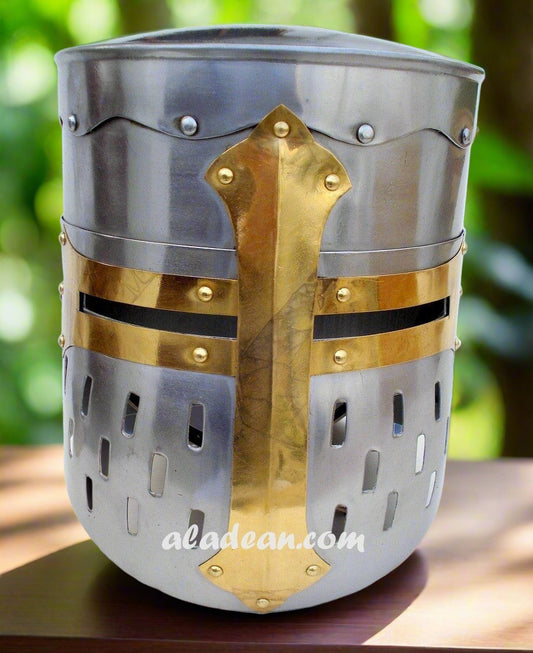The Legacy of the Crusader Helmet: Protecting Knights on Their Quest
Share
The Crusader helmet is one of the most iconic symbols of the medieval knight. Worn by Christian warriors during the Crusades, these helmets not only provided essential protection in battle but also embodied the religious and cultural fervor of the time. In this blog post, we'll explore the history, design, and significance of Crusader helmets, shedding light on their role in one of history's most turbulent periods.
Historical Context of the Crusades
-
Origins and Motivations:
- The Crusades began in the late 11th century, initiated by Pope Urban II to reclaim the Holy Land from Muslim control. These military campaigns were driven by religious fervor, political ambition, and economic motives.
-
Major Crusades:
- The First Crusade (1096-1099) successfully captured Jerusalem, establishing several Crusader states. Subsequent Crusades, such as the Second (1147-1149), Third (1189-1192), and Fourth (1202-1204), aimed to defend or recapture these territories, each with varying degrees of success.
Evolution of Crusader Helmets
-
Early Crusades:
-
Design and Features:
- Early Crusader helmets, such as the nasal helm, featured a conical shape with a prominent nose guard. These helmets were simple yet effective, providing basic protection while allowing for good visibility and ventilation.
-
Usage:
- Nasal helms were paired with chainmail coifs for additional protection. They were widely used during the First and Second Crusades, offering a balance between protection and practicality.
-
Design and Features:
-
High and Late Crusades:
-
Great Helm (Heaume):
- The Great Helm emerged around the 12th century, offering full head protection. It featured a cylindrical shape with a flat or rounded top, narrow eye slits, and a faceplate. This design provided superior protection against head injuries.
-
Advantages and Disadvantages:
- While the Great Helm offered enhanced protection, it also had limitations such as reduced visibility and ventilation. Knights often removed these helmets during prolonged periods of non-combat to avoid overheating.
-
Great Helm (Heaume):
Functional Aspects of Crusader Helmets
-
Protection:
- Helmets were crucial for protecting knights from head injuries, arrows, and sword strikes. The evolution of helmet designs reflected the need for improved defense against increasingly powerful weapons.
-
Visibility and Ventilation:
- The design of Crusader helmets balanced protection with functionality. Narrow eye slits and ventilation holes allowed knights to see and breathe while maintaining defense against attacks.
-
Weight and Comfort:
- The weight of the helmets affected a knight’s mobility and comfort. Advances in design aimed to reduce the weight while maximizing protection, allowing knights to remain effective in battle.
Symbolic and Religious Significance
-
Crusader Identity:
- Crusader helmets often featured crosses and other religious symbols, representing the knight's commitment to the Crusade and Christian faith. These symbols reinforced the religious motivations behind the Crusades.
-
Chivalric Ideal:
- Helmets contributed to the image of the chivalric knight, embodying ideals of bravery, honor, and piety. The distinctive design of Crusader helmets became a symbol of the knightly class and their role in the holy wars.
Craftsmanship and Materials
-
Construction Techniques:
- Crusader helmets were typically made of iron or steel, crafted by skilled blacksmiths. The process involved forging, hammering, and shaping the metal to create strong and durable helmets.
-
Decorative Elements:
- Many helmets were adorned with engravings, crests, and religious motifs, adding to their aesthetic appeal and symbolic value. These decorative elements also served to identify the wearer and their allegiance.
The Crusader helmet is a powerful symbol of a knight's role during the Crusades, representing both their martial prowess and their religious devotion. These helmets are a testament to the craftsmanship and cultural values of medieval Europe, providing a window into a pivotal era in history.
Browse our selection of Crusader helmets, each meticulously crafted to reflect the authenticity and spirit of the original designs. Perfect for collectors, reenactors, or anyone passionate about medieval history, our helmets offer a tangible connection to the past.

